The most devastating coral bleaching event the world has ever seen is underway on the Great Barrier Reef. Australia's preeminent scientists, conservationists and tourism operators warn this event points to the end of coral reefs worldwide unless change is made.
A glow-in-the-dark mess of fleshy fingers looms below. The soft coral is a sickly buttercup colour, like a lurid aquarium toy.
"The corals luminesce before they die," Anne Hoggett says, matter of factly.
It's not that she doesn't care. She cares immensely.

Stressed coral turns an unnatural shade before it is bleached completely. Picture: Cayla Dengate
She's spent 26 years living on Lizard Island – a green spot of a national park on the Great Barrier Reef surrounded by atolls so pristine, it's attracted visitors such as David Attenborough, Sylvia Earle and every marine biologist worth their salt.
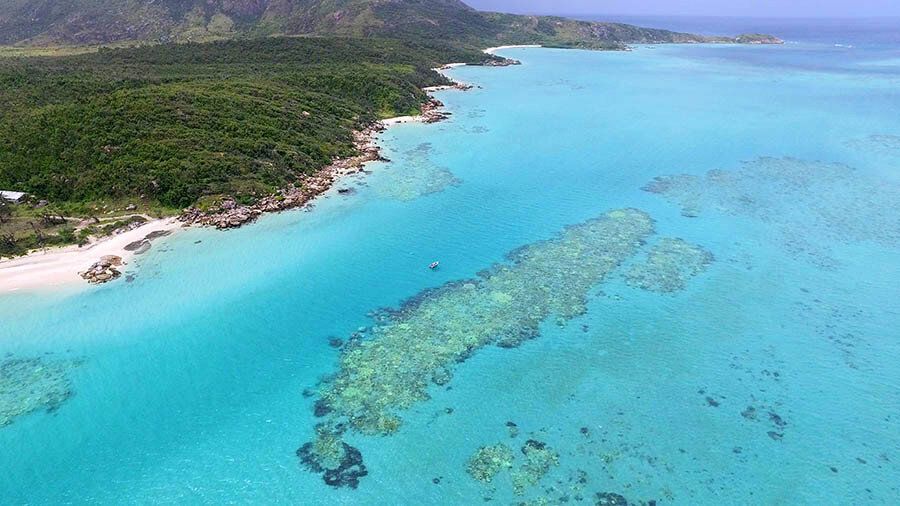
Coral bleaching can be seen from the air in the reefs around Lizard Island. Picture: Dr Dean Miller
She cares greatly about the 2016 coral bleaching event that's swept from north to south down the spine of the Great Barrier Reef, turning once-healthy corals into ghostly skeletons covered by swampy algae.
Some days you don't want to go out, Hoggett says. To be confronted with the death of an ecosystem you love.
She's co-director of the Australian Museum Lizard Island Research Station along with Lyle Vale, who is recording the death of corals he's watched flourish for years.

Lyle Vale and Anne Hoggett live on an island in the Great Barrier Reef. Picture: Cayla Dengate
"A lot of those corals I probably swim over once a week for the past 26 years and when we saw the first stress signs starting to happen in early February, you feel very distressed," Vale said.
"A few weeks later, some of these long-lived corals just can't hold on any more and then the progression happens quite rapidly as they become completely white.
"You get angry."
On this island outpost, they are quite literally surrounded by the coral bleaching event.
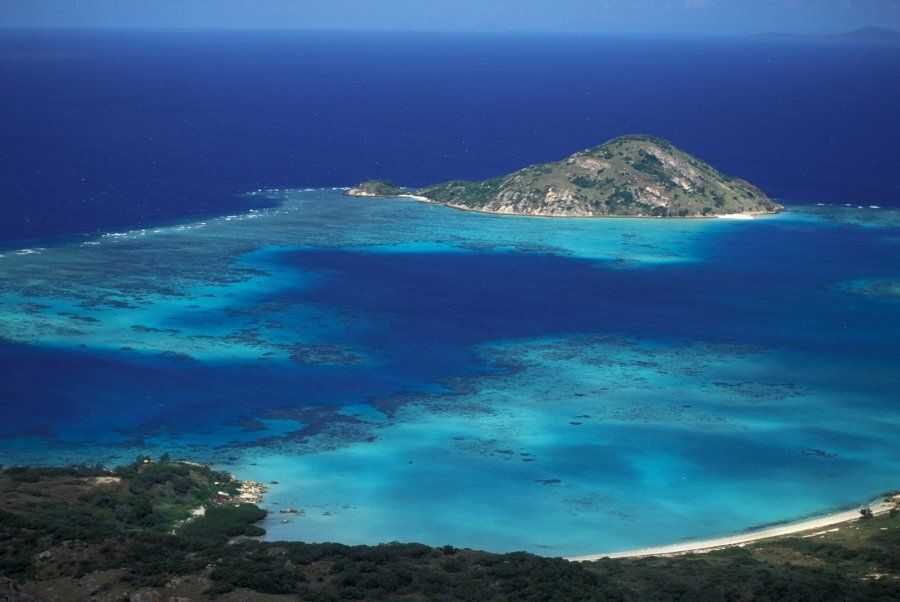
Lizard Island is surrounded by coral reefs. Picture: Education Images/UIG via Getty Images
In the back of one of Lizard island's 4WDs is Charlie Veron, the man responsible for identifying 20 percent of all coral species in this world as well as eco-tourism pioneer John Rumney -- whose Port Douglas tourism vessel hosted some of the most important research of the 80s and 90s.
Then there's Ph.D. biologist turned filmmaker Dean Miller -- who filmed minke whales for David Attenborough's Great Barrier Reef documentary and World Wildlife Fund reef conservationist Rick Leck.
These guys are scientists, but they're no strangers to packing into the back of a truck or flipping off the side of a boat under a full moon on the reef.
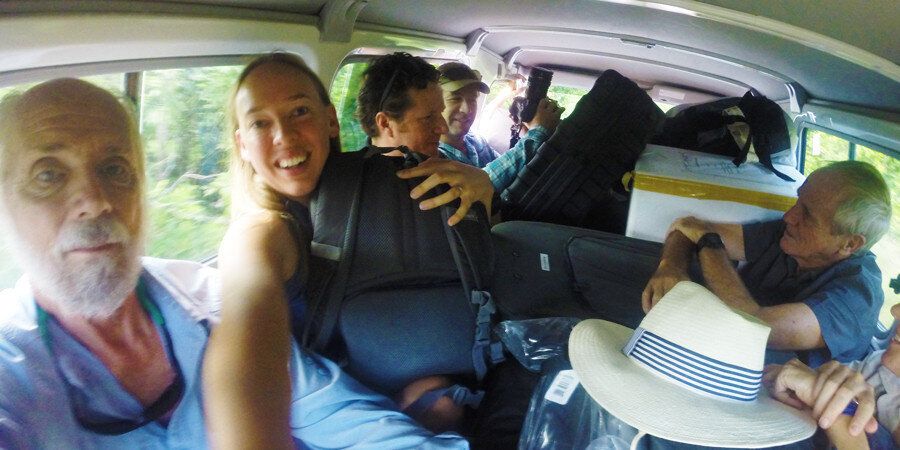
These scientists (and journalist) are no stranger to the back of a troop carrier. Picture: Cayla Dengate
As Veron has become older and more respected, the opportunities to dive come around less often.
"Some of the younger researchers either think I'm too important or too old," he says.
Zipping up his stinger suit and plunging off the back of the boat, it's clear he's not too old, that's for sure. But important. Well, this is the man whose 2009 book resulted in an emergency meeting of the Zoological Society of London chaired by Attenborough.
He also took what appears to be the first known photograph of a bleached coral and previously chaired the Australian Institute of Marine Science.
When he uses the term "mass extinction" you pay attention.
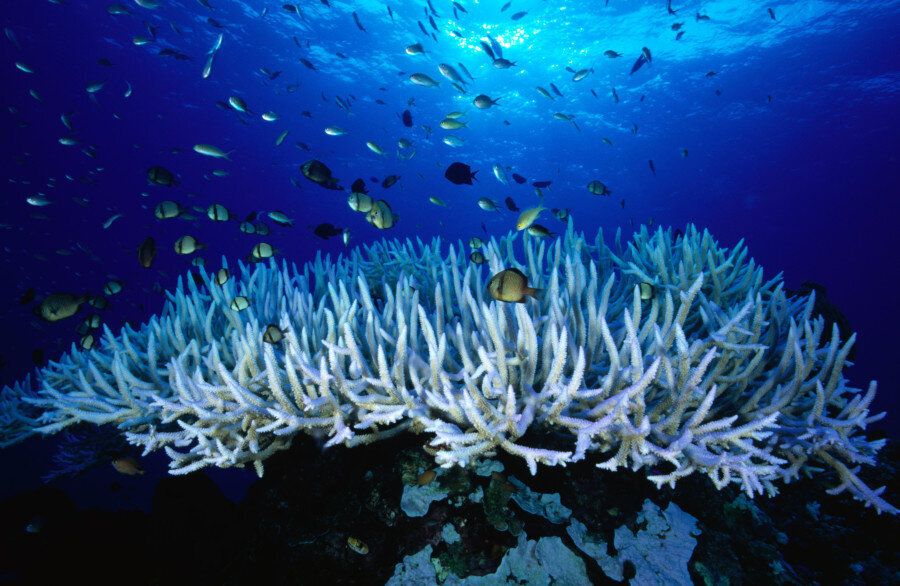
Bleached coral in Papua New Guinea. Picture: Bob Halstead via Getty Images
The first time Veron saw a bleached coral in the early 1980s, he thought it was a new species.
"I was just swimming along, doing my regular work with corals and I saw this white coral," Veron said.
"I didn't know what it was so I took a photograph of it and I came back to same spot a few months later and there it was dead. I just thought something killed it.
"It wasn't until I was working in Japan that I first saw a mass bleaching. I thought some chemical must have been spilled in the water -- everything was white."
What Veron described was a coral reef experiencing such a severe temperature change, the coral had expelled its colourful food-producing algae and then died.
What is coral bleaching?
Coral hosts tiny algae in its tissues called zooxanthellae that produce its food as well as its colour.
When waters become too hot or cold, the coral becomes stressed and its metabolism and reproductive system break down.
At this point, it cannot process the oxygen created by the zooxanthellae, so it expels them.
If the temperature returns to normal, these tiny creatures can re-enter the tissues, or if most but not all algae have been expelled, the remaining few can keep the coral alive.
If the temperatures remain extreme and the sun continues shining, the coral dies.
There is no specific temperature threshold that tips coral into bleaching territory, rather, it's a cumulative stress.
There were extreme coral bleaching events in Australia in 1998 and 2002, corresponding with unseasonably hot conditions. On Lizard Island, however, Vale and Hoggett noticed it wasn't just the extreme weather events causing bleaching.
"What we're seeing now is a little bit of bleaching almost every summer," Vale said.
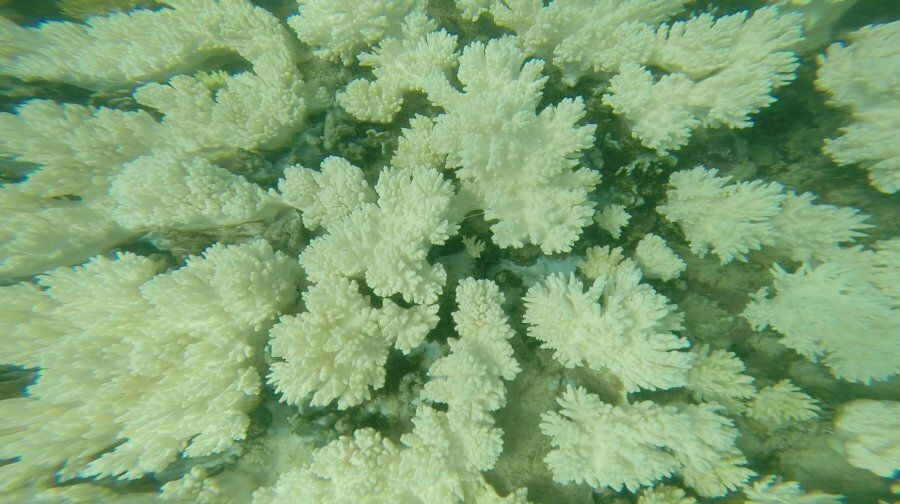
Bleached coral at Lizard Island. Picture: Cayla Dengate
The 2015-16 summer was what Vale calls a "double whammy" – the usual summer conditions, along with an El Nino weather cycle, which meant they could count on one hand the number of times it rained during their wet season.
A reef can handle a coral bleaching event in the same way a forest can handle a fire every few years. The Great Barrier Reef can withstand some bleaching but it has been barraged with threats, great and small, for decades including Cyclone Yasi and outbreaks of coral-eating crown of thorns starfish, which are spurred on by nutrient-rich farming run-off.
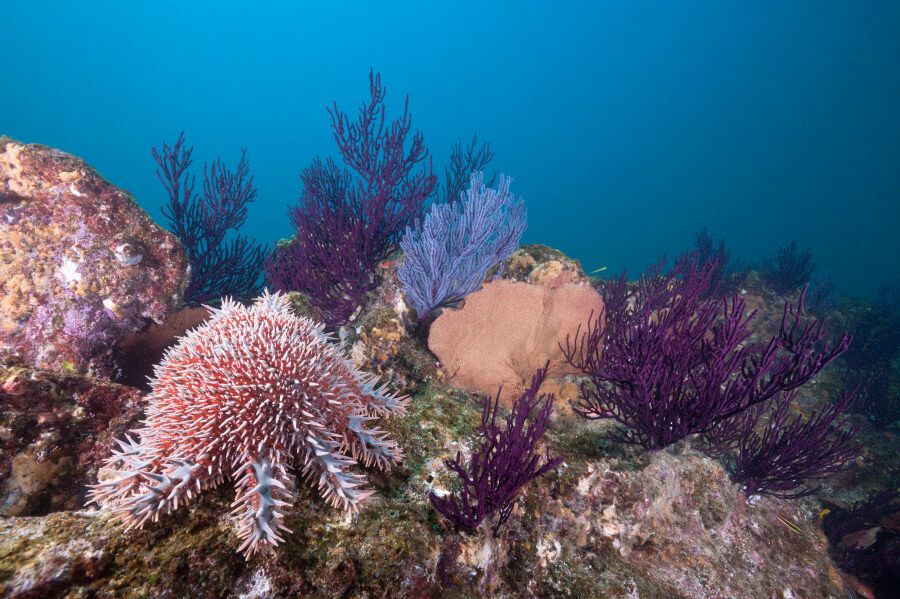
Crown of thorns starfish can eat one square metre of coral a day. Picture: Getty Images
Colorado-born John Rumney spent his adult life on the reef as a commercial fisherman, living for days at a time offshore and later launching a tourism operation, but nothing prepared him for the devastation at Lizard Island.
"It was very depressing," Rumney said.
"It was definitely the worst coral bleaching I've seen in all the years -- it's really hard to put the emotions in words -- this is what you love and why you came here and what you spent your life, you know, sharing with people and to think that it is in jeopardy is a whole new experience for myself."

John Rumney wants people who arrive at the reef as tourists to go home as conservation advocates. Picture: Cayla Dengate
Rumney's is a unique voice in a tourism industry that largely, doesn't want to dissuade the increasing number of international tourists arriving to see the reef.
After all, Cairns International Airport last year had more visitor growth than any capital city with strong growth from China and Japan. Visits to the entire Great Barrier Reef Marine Park for 2014 were 2.19 million visitor days and in 2012, the value of the Great Barrier Reef was calculated at providing $5.6 billion to Australia's economy and generating 69,000 full-time jobs.
Coral bleaching is bad for this big business.
"Tourism is afraid to admit and discuss this very touchy subject because the negative PR may mean that some tourists won't come but if we don't deal with this, no tourists will come and we'll have a collapse of that economy," Rumney said.
"This bleaching is a major event but it's not all over -- we can change our behaviour.
"The spine of the Great Barrier Reef is still good and if there isn't another bleaching event for 10 years, it will bounce back."
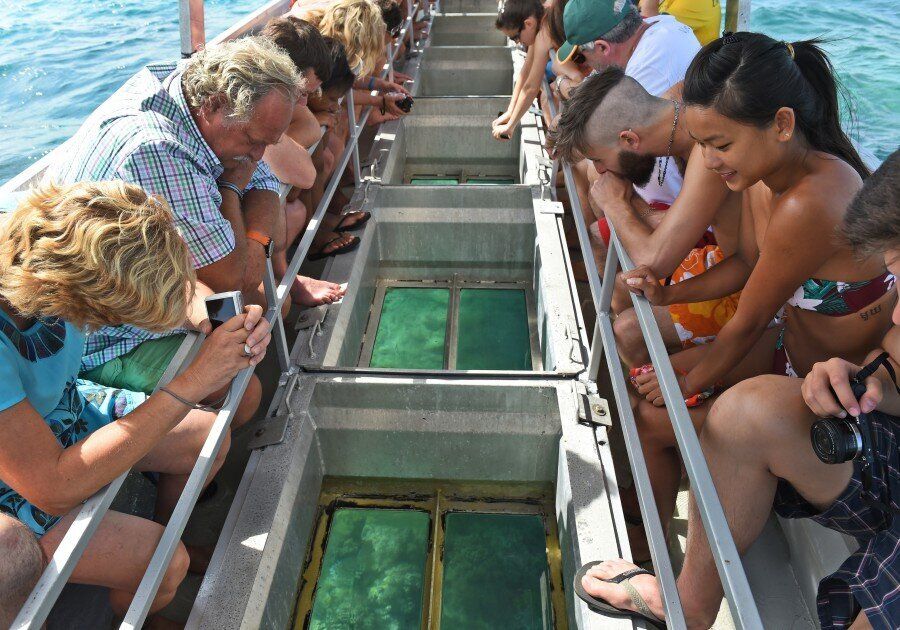
The Great Barrier Reef supports an enormous tourism industry. Picture: William West / Getty Images
Queensland Tourism Industry Council spokesman Daniel Gschwind spoke to The Huffington Post Australia from Agincourt Reef off Port Douglas where he called for moderation.
"The current bleaching event is of concern to the tourism industry however it must be understood in the context of the size, complexity and resilience of the Great Barrier Reef," Gschwind said.
"It is too early to say what the long-term impact, if any, will be to reefs regularly visited by tourists.
"Overzealous reporting of damage is not helpful for the public's understanding and potentially threatens the future of the one industry that offers both conservation benefits and economic opportunity -- tourism."
How does Australia protect the largest living 'creature' – the entire Great Barrier Reef – while it recovers from this coral bleaching event?
It's a question that plagues World Wildlife Fund's Rick Leck as he plunges down to see Lizard Island's bleached corals for himself.
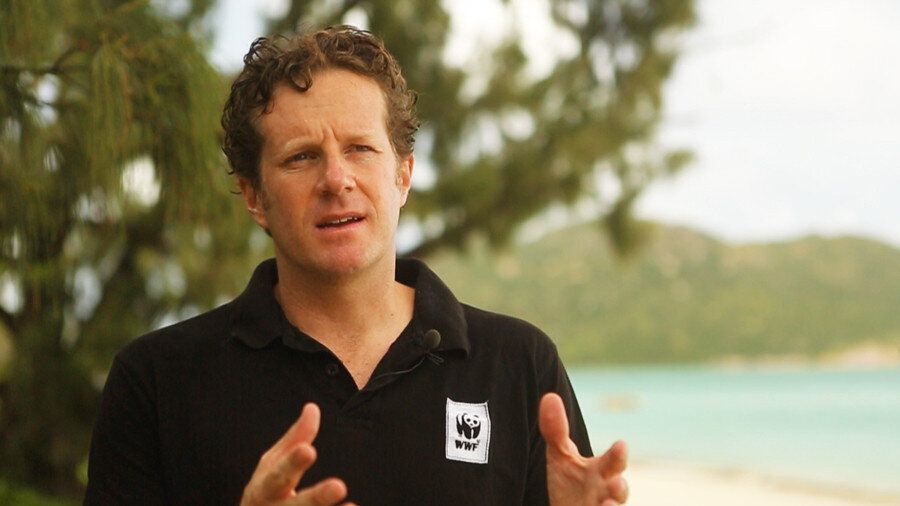
Rick Leck lobbies the Federal Government to protect the Great Barrier Reef. Picture: Cayla Dengate
He admits he knows his way around Canberra better than the reef these days, and is determined to show Australians why they need to care about the reef's survival.
"Coral bleaching is the most visible example of climate change," Leck said.
"You can't get anything more confronting than a reef that has been bleached with white patches of coral here and coral that's another colour there.
"The Great Barrier Reef's coral bleaching is the face of climate change."
Leck said it may feel like an insurmountable issue, but there were straightforward actions Australia could take immediately to protect the reef, like calling on the Federal Government to speed up the move to renewable energy and away from carbon dioxide-producing coal power, reducing pollution from farming and stopping land clearing along Queensland's coast.
"Coral reefs are amazing in their ability to recover if you take away the threats that are causing their degradation," Leck said.
"If we take action on renewable energy, if we reduce the pollution that's flowing to the reef and we invest in those systems we know can work, then the reef can recover.
"It may take years, it may take decades but it will recover and that's what we need to be working towards."
When it comes to saving the reef via the slowing of climate change, the question must be asked: what does failure look like?
You can see in Veron's eyes he's dwelt on this answer for more than a decade.
There's a raw quality to this science-minded man when he replies.
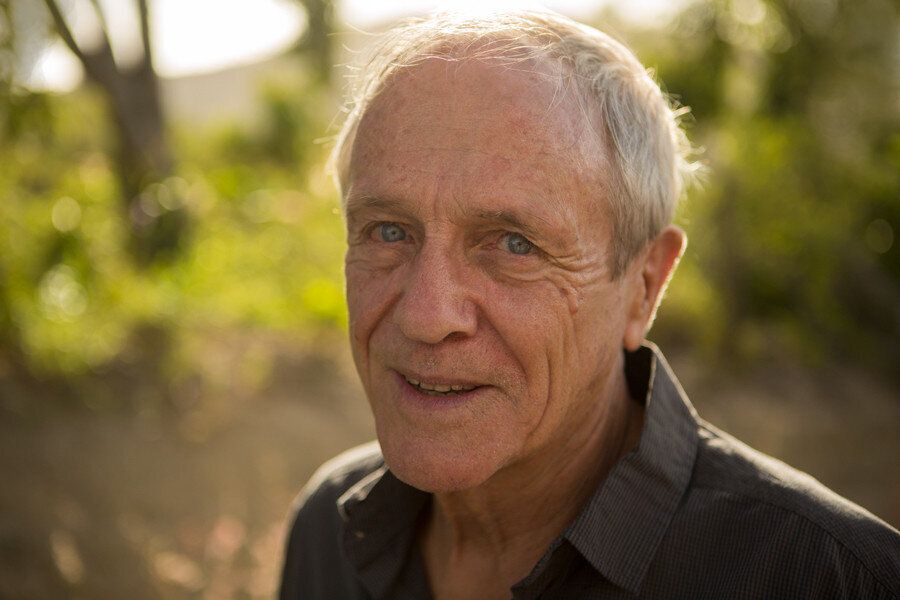
Charlie Veron says change needs to happen now to protect the world's reefs. Picture: Cayla Dengate
"Reefs are the historians of nature -- they keep fossils in their layers that tell an enormous amount about the environment in which the corals grow.
"And they show coral reefs worldwide have been wiped out about 20 to 35 times in the planet's history due to carbon dioxide.
"We're not talking about a case of the reefs being damaged one year and then recovering the next, we're taking about when there is no coral around for hundreds of thousands of millions of years.
"We are looking at the beginning of that."
"Now it's not only about corals either. Roughly one third of all marine species have got some part of their life cycle in a coral reef. Once you wipe out a coral reef, you are really hitting the oceans -- it's beyond imagination.
"That is a mass extinction and there is every reason to believe that we are triggering it.
"There's human time and there geological time. They're completely different. If we're looking at human time, we're seeing the end of coral reefs as far as humans are concerned.
"There are people alive today who will search the world and not find a single piece of coral, I believe, it is really that bad."
Transportation to Lizard Island was provided by WWF Australia.